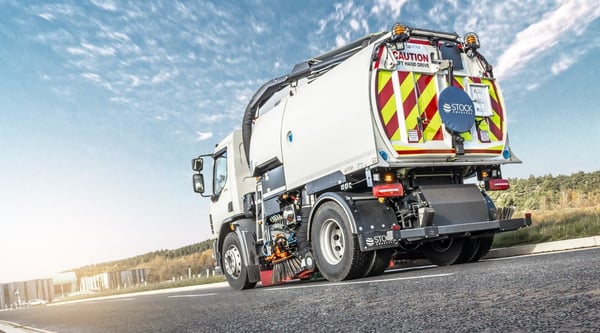Using Prema HVO provides full lifecycle greenhouse gas (GHG) emission savings of ~90% when compared to conventional diesel. Read on to learn how this works in practice (with a useful jargon buster at the end).
Watch the walkthrough video:
Ready to speak with an expert?
Our HVO team are here to help.
Keep reading for the details
What we mean by ‘lifecycle emissions’…
Prema HVO’s ~90% GHG emission savings come a full lifecycle assessment of the fuel – its entire carbon footprint from production all the way through to its use.
The direct emissions from burning Prema HVO are considered to be zero – or ‘carbon neutral’ – by UK government. This is because the fuel is made from 100% waste plant matter, which pulled carbon from the atmosphere while growing. The plant matter was converted into cooking oil, became a waste product, and was then converted into Prema HVO. When it’s eventually burnt as HVO, the carbon the plant matter originally pulled from the atmosphere is released again, so there is no net change to the carbon levels in the atmosphere.
The small amount of net carbon from Prema HVO comes from the wider lifecycle emissions generated from ‘well to tank’ (WTT). This includes:
- The transportation of the feedstock (used cooking oil) to the refinery
- The hydrotreatment process used to produce HVO
- The onward transportation and distribution of Prema HVO to your tank.
How HVO compares to conventional diesel…
Conventional diesel is around 94% fossil diesel, which is made from crude oil. Unlike the waste plant matter used to produce Prema HVO, crude oil is trapped deep under the Earth’s surface and is not part of the planet’s natural ‘carbon cycle’. When burnt, crude oil increases overall carbon levels in the atmosphere. There are also additional WTT emissions to contend with.
Using the government’s official GHG conversion factors for emissions reporting, the GHG emissions of conventional diesel in 2021 are as follows:
- 2.512kg CO2e per litre in direct emissions
- 0.609kg CO2e per litre in WTT lifecycle emissions
The total carbon footprint of a litre of conventional diesel is therefore 3.122kg CO2e.
In comparison, the emissions from the latest shipment of Prema HVO (date?) are as follows:
- 0kg CO2e per litre in direct emissions
- 0.224kg CO2e per litre in WTT lifecycle emissions
The total carbon footprint of a litre of Prema HVO is therefore 0.224kg CO2e.
Proof of impact…
We can guarantee the emission savings of Prema HVO because each and every import is certified to International Sustainability and Carbon Certification (ISCC) criteria. ISCC is an independent, globally applicable sustainability certification system.
“ISCC is the gold standard for environmental, economic and social sustainability, globally”
Niamh Boyle, Research Analyst, PRIMA Markets, UK
An ISCC Proof of Sustainability (POS) certificate is provided with every cargo. The figures from the POS statement can be used to calculate GHG emissions, as in the below example:

The GHG value on the certificate is 760g CO2e/MJ. Since the fuel is 34MJ/litre, the CO2e/litre figure is therefore 760/34, or 0.224kg CO2e per litre. As it states on the certificate, the emission savings compared to conventional diesel are 91.92%.
You can learn more about why ISCC POS is accepted as proof of sustainability and full lifecycle GHG emissions on the ISCC website.
IMPORTANT: Why Prema HVO can guarantee accuracy…
Not all HVOs are alike. Some are made from one type of oil, whereas others are made from multiple types, from used cooking oil to animal fat residue, non-food grade vegetable oils and ‘tall oil’ from wood pulp manufacture.
The real-world GHG emissions from HVO fuel will vary depending on what it’s made from. HVO made from used cooking oil provides the lowest GHG emissions.
Prema HVO is made from just one feedstock – used cooking oil. It’s a single-source product supplied by one supplier, Neste, and its provenance can be proven through its ISCC status. Having this chain of custody means Prema HVO can guarantee credible and accurate emissions reporting.
We hope this gives you a clearer understanding of the GHG emissions of Prema HVO. If you would like to discuss anything further, or have questions about reporting and calculating your emissions, please do get in touch.














